Transporting concrete efficiently and safely is a critical component in the construction industry. Whether it’s for large-scale infrastructure projects or residential developments, ensuring that concrete reaches its destination in optimal condition can significantly impact the quality and timeline of a project. At CarMax Vehicle, we specialize in providing top-tier semi-trailers designed specifically for concrete transportation, ensuring reliability and efficiency in every delivery. This comprehensive guide delves into the intricacies of concrete transportation, addressing key considerations, best practices, and the innovative solutions that CarMax Vehicle offers to streamline the process.
Table of Contents
- Understanding Concrete Transportation
- Types of Concrete Trucks and Equipment
- Choosing the Right Semi-Trailer for Concrete
- Best Practices for Loading and Unloading Concrete
- Safety Measures in Concrete Transportation
- Regulatory Compliance and Permits
- Optimizing Route Planning for Efficiency
- Maintenance and Care of Concrete Transport Vehicles
- Innovations in Concrete Transportation by CarMax Vehicle
- Environmental Considerations
- Cost-Effective Strategies for Concrete Transport
- FAQs
Understanding Concrete Transportation
Concrete transportation is the process of moving freshly mixed concrete from a batching plant to the construction site. The goal is to maintain the concrete’s workability and ensure it arrives without segregation or premature setting. Effective transportation minimizes delays and preserves the integrity of the concrete mix, which is crucial for the structural performance of the finished product.
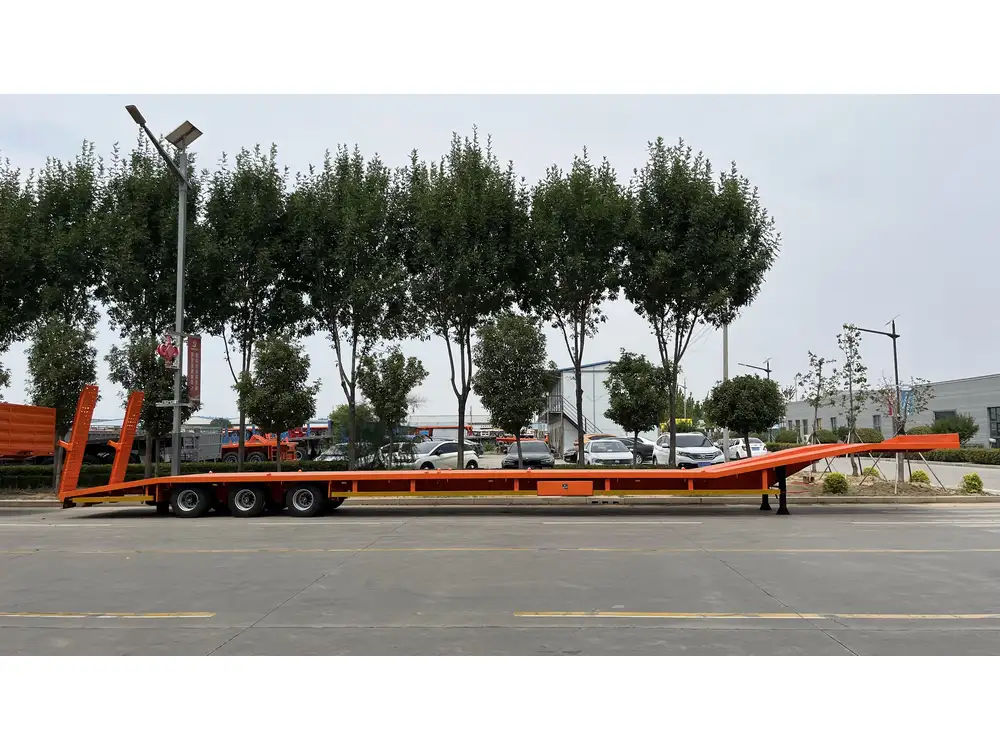
Key Factors in Concrete Transportation
- Distance: The length of the transportation route affects the choice of equipment and the concrete mix design.
- Timing: Concrete begins to set shortly after mixing, so timely delivery is essential.
- Weather Conditions: Temperature and humidity can impact the setting time and workability of concrete.
- Route Conditions: Road quality, traffic patterns, and accessibility influence transportation efficiency.
Types of Concrete Trucks and Equipment
Selecting the appropriate equipment is vital for efficient concrete transportation. Here’s an overview of the primary types of concrete transport vehicles:
Transit Mixers
Transit mixers are equipped with rotating drums that keep the concrete agitated during transit to prevent setting.
Advantages:
- Continuous mixing ensures uniform consistency.
- Suitable for long-distance transport.
Disadvantages:
- Higher fuel consumption.
- Potential for wear and tear due to constant rotation.

Volumetric Mixers
Volumetric mixers allow on-site mixing, providing flexibility in the concrete mix ratio.
Advantages:
- Reduced waste and spoilage.
- Adaptable to varying project requirements.
Disadvantages:
- Requires more complex equipment handling.
- May not be suitable for very large volumes.
Dry Mix Trailers
Dry mix trailers transport the dry ingredients, which are then combined with water at the construction site.
Advantages:
- Lightweight and fuel-efficient.
- Flexible on-site adjustments.
Disadvantages:
- Dependency on on-site facilities for mixing.
- Potential for inconsistent mix quality if not managed properly.
Choosing the Right Semi-Trailer for Concrete
Selecting the appropriate semi-trailer is crucial for ensuring the safe and efficient transport of concrete. CarMax Vehicle offers a range of semi-trailers tailored to meet the diverse needs of concrete transportation.
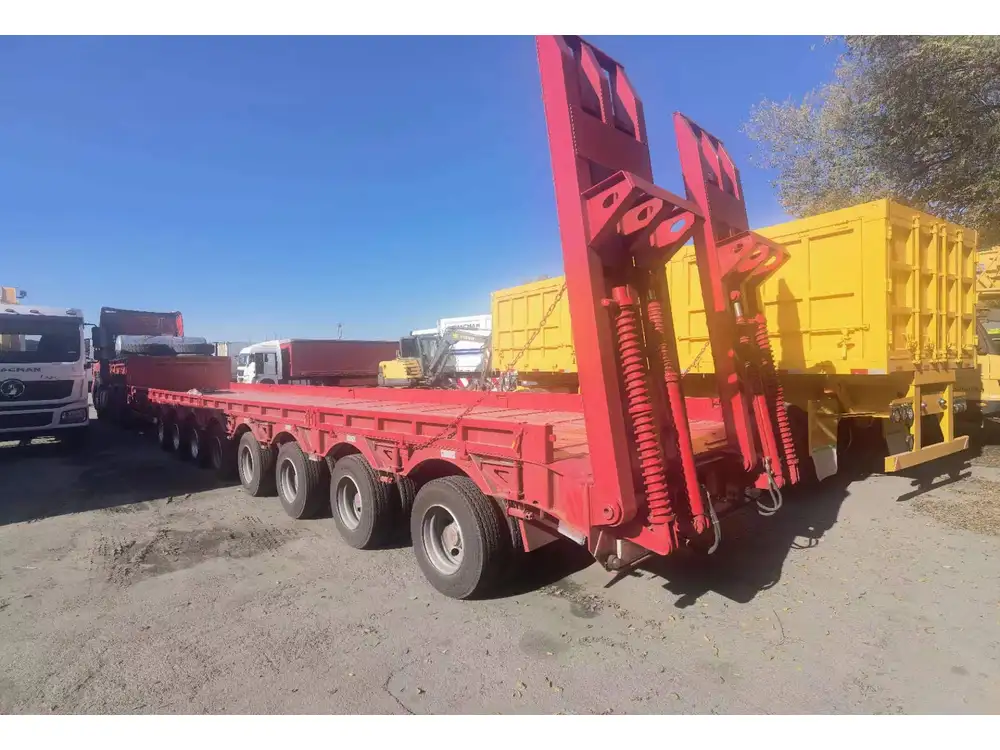
Key Considerations
- Capacity: Ensure the trailer can handle the volume of concrete required for your projects.
- Durability: Opt for trailers constructed from high-quality materials to withstand the rigors of transportation.
- Ease of Maintenance: Select trailers that are easy to service and maintain, minimizing downtime.
- Customization Options: Consider trailers that can be customized to specific project needs, such as adjustable drum speeds or specialized loading systems.
CarMax Vehicle’s Semi-Trailers
| Feature | CarMax Vehicle Model A | Model B | Model C |
|---|---|---|---|
| Capacity | 10 cubic meters | 12 cubic meters | 15 cubic meters |
| Material | High-tensile steel | Reinforced aluminum | Composite alloys |
| Rotation Speed | Adjustable up to 30 RPM | Fixed 25 RPM | Variable from 20-35 RPM |
| Fuel Efficiency | Optimized for low consumption | Standard efficiency | High-efficiency engines |
| Customization | Available for drum type, size | Limited options | Fully customizable |
Best Practices for Loading and Unloading Concrete
Efficient loading and unloading are critical for maintaining the quality of concrete and ensuring the safety of personnel.
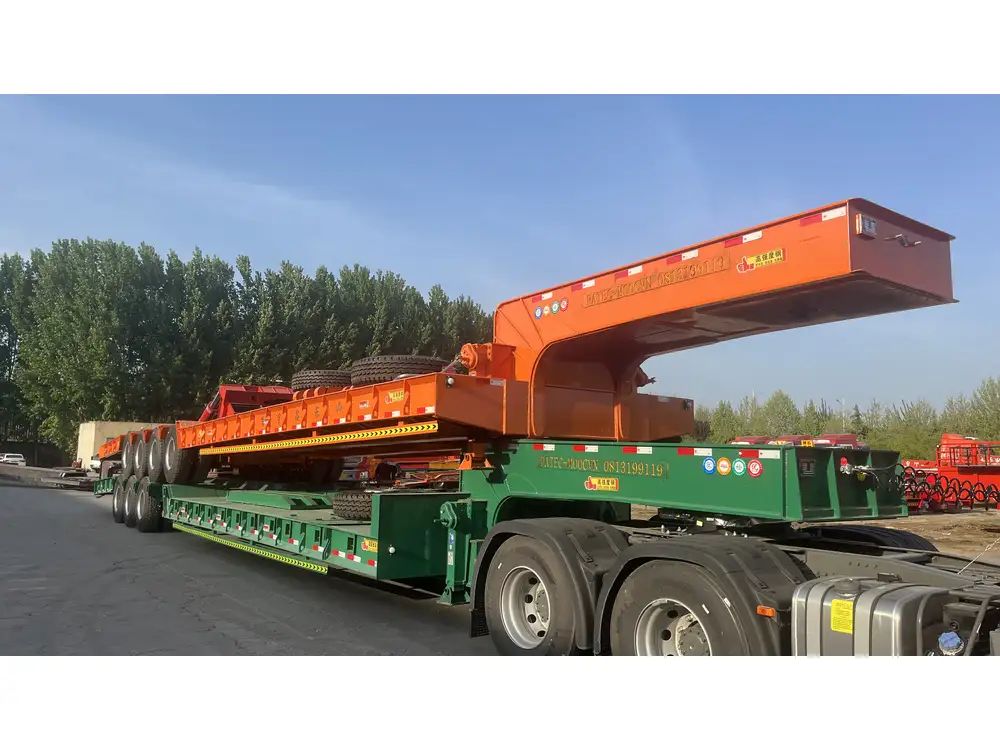
Loading Procedures
- Preparation: Ensure the semi-trailer is clean and free from debris. Inspect the drum for any signs of wear or damage.
- Mix Inspection: Verify that the concrete mix meets the project specifications regarding slump, strength, and other relevant parameters.
- Load Evenly: Distribute the concrete uniformly across the trailer to maintain balance during transit.
- Monitor Temperature: Keep track of the concrete temperature to prevent premature setting.
Unloading Procedures
- Site Preparation: Ensure that the pouring area is ready to receive the concrete, with appropriate forms and reinforcements in place.
- Controlled Pouring: Use automated systems or skilled operators to control the flow of concrete, avoiding splashing or segregation.
- Immediate Action: Start spreading and finishing the concrete as soon as it is poured to maintain workability and consistency.
Safety Measures in Concrete Transportation
Safety is paramount in concrete transportation to protect operators, the public, and the structural integrity of the concrete.

Vehicle Safety
- Regular Inspections: Conduct daily checks of the semi-trailer and truck components, including brakes, tires, and lights.
- Load Securing: Ensure that concrete is securely contained within the trailer to prevent spills during transit.
- Driver Training: Provide comprehensive training for drivers on safe handling, emergency procedures, and load management.
Concrete Handling Safety
- Personal Protective Equipment (PPE): Equip all personnel with appropriate PPE, such as gloves, helmets, and high-visibility clothing.
- Site Safety Protocols: Implement strict safety protocols at both loading and unloading sites to prevent accidents.
- Emergency Response Plans: Develop and communicate clear emergency response plans in case of spills, accidents, or other incidents.
Regulatory Compliance and Permits
Adhering to legal and regulatory requirements is essential for avoiding fines, project delays, and ensuring safe operations.
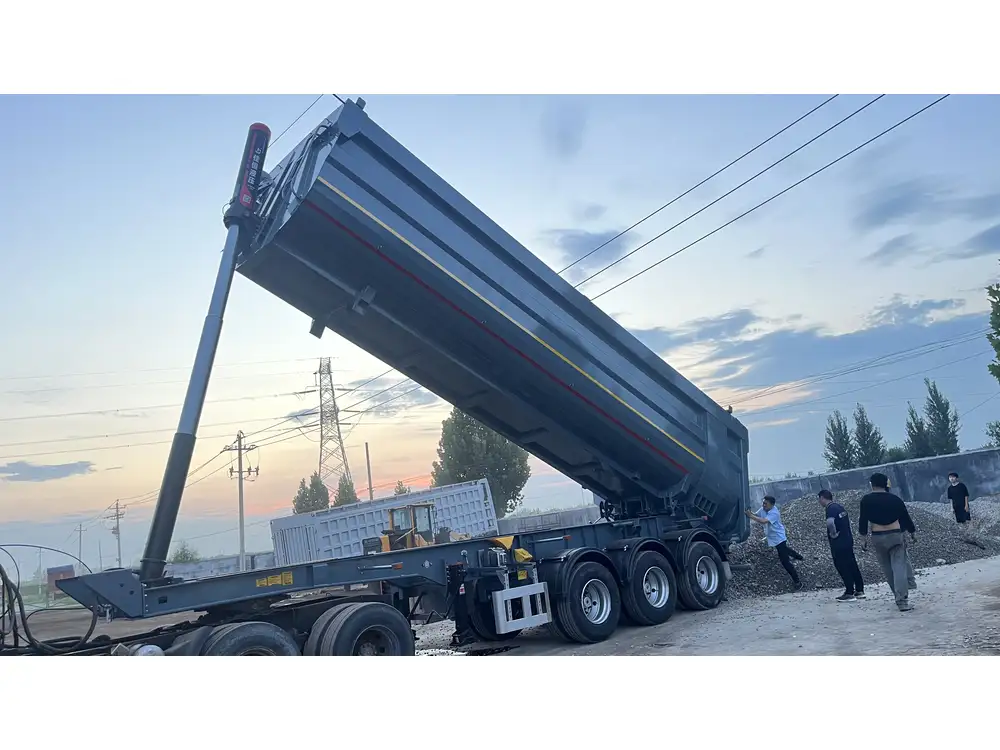
Key Regulations
- Transportation Laws: Comply with local, state, and federal regulations regarding vehicle weight limits, route restrictions, and licensing.
- Environmental Standards: Follow guidelines for minimizing environmental impact, such as controlling dust and preventing concrete runoff.
- Workplace Safety: Adhere to Occupational Safety and Health Administration (OSHA) standards to ensure a safe working environment.
Permitting Process
- Route Approval: Obtain necessary permits for transport routes, especially for oversized loads or restricted areas.
- Vehicle Registration: Ensure all transport vehicles are properly registered and meet regulatory standards.
- Documentation: Maintain accurate records of all permits, inspections, and compliance measures for audits and verification.
Optimizing Route Planning for Efficiency
Effective route planning minimizes transit time, reduces costs, and ensures timely delivery of concrete.
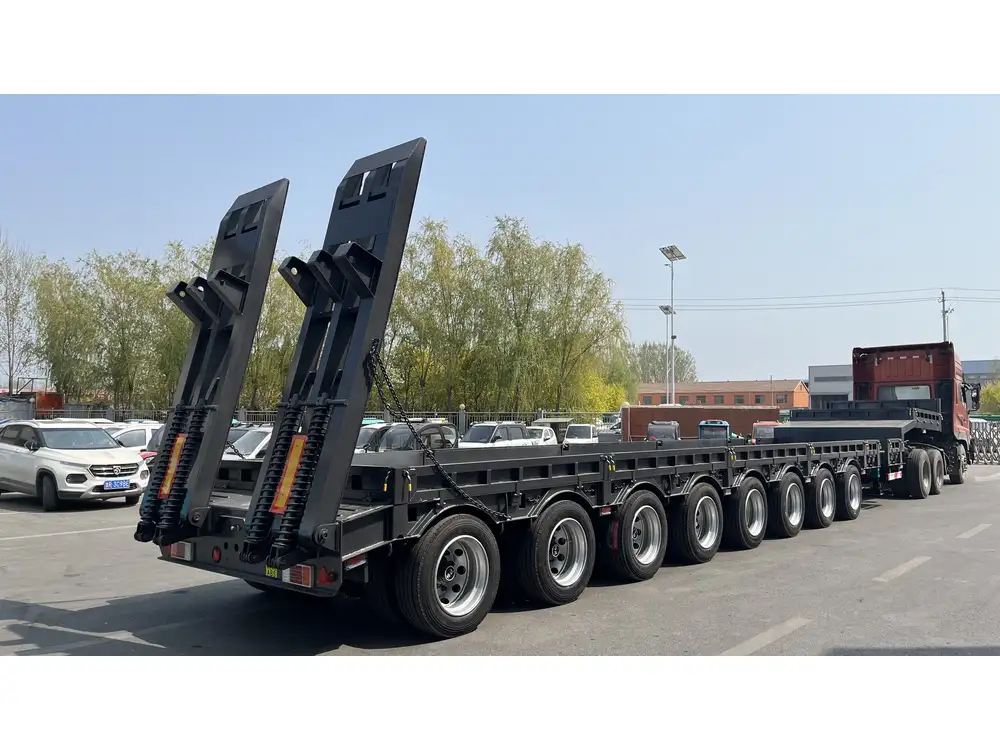
Factors to Consider
- Distance and Time: Choose routes that balance distance with travel time to prevent concrete from setting before reaching the site.
- Traffic Patterns: Analyze traffic data to avoid peak hours and congested areas, ensuring smoother transit.
- Road Conditions: Select routes with good road quality to prevent damage to the semi-trailer and maintain concrete integrity.
- Permits and Restrictions: Account for any route-specific restrictions, such as weight limits, bridge capacities, and low-clearance areas.
Tools and Technologies
- GPS Navigation Systems: Utilize advanced GPS systems for real-time route updates and traffic monitoring.
- Route Optimization Software: Implement software solutions that calculate the most efficient routes based on multiple variables.
- Telematics: Use telematics for fleet management, tracking vehicle performance, and ensuring adherence to planned routes.
Maintenance and Care of Concrete Transport Vehicles
Regular maintenance is vital for the longevity and reliability of concrete transport vehicles.

Maintenance Schedule
| Component | Frequency | Maintenance Tasks |
|---|---|---|
| Engine | Weekly/Daily | Check oil levels, inspect for leaks, monitor performance |
| Drum and Mixing Mechanism | After each use | Clean thoroughly, inspect for corrosion or damage |
| Brakes and Tires | Weekly | Inspect for wear, ensure proper inflation, test brake functionality |
| Electrical Systems | Monthly | Test lights, signals, and wiring for faults |
| Hydraulic Systems | Quarterly | Check fluid levels, inspect for leaks or damage |
Preventive Maintenance Tips
- Regular Cleaning: Keep the trailer and drum clean to prevent buildup that can affect performance.
- Routine Inspections: Conduct daily inspections to identify and address issues before they escalate.
- Professional Servicing: Utilize certified technicians for complex maintenance tasks to ensure quality and safety.
- Record Keeping: Maintain detailed maintenance logs to track service history and plan future upkeep.
Innovations in Concrete Transportation by CarMax Vehicle
CarMax Vehicle is at the forefront of innovation in concrete transportation, continuously enhancing our semi-trailers to meet the evolving demands of the construction industry.

Advanced Drum Technology
Our semi-trailers feature state-of-the-art drum designs that ensure optimal mixing efficiency and concrete consistency during transit. The adjustable rotation speeds allow for precise control based on the specific requirements of each project.
Fuel-Efficient Engines
We prioritize sustainability by incorporating high-efficiency engines in our trailers, reducing fuel consumption and minimizing the environmental footprint of concrete transportation.
Smart Monitoring Systems
CarMax Vehicle’s trailers are equipped with smart monitoring systems that provide real-time data on vehicle performance, load conditions, and route progress. This technology enables proactive maintenance, enhances safety, and ensures timely deliveries.

Ergonomic Design
Our semi-trailers are designed with operator comfort and ease of use in mind. Features such as intuitive controls, comfortable cab layouts, and easy access to maintenance points contribute to a more efficient and pleasant working experience.
Environmental Considerations
Sustainable practices in concrete transportation are essential for reducing the environmental impact of construction activities.
Emissions Reduction
CarMax Vehicle’s semi-trailers are built with fuel-efficient engines and emission control technologies to comply with environmental regulations and reduce greenhouse gas emissions.

Waste Minimization
Our transportation solutions are designed to minimize concrete spoilage and waste. Precision loading and controlled pouring techniques ensure that the maximum amount of concrete is utilized effectively.
Eco-Friendly Materials
We use environmentally friendly materials in the construction of our trailers, prioritizing durability and recyclability to support sustainable practices in the industry.
Cost-Effective Strategies for Concrete Transport
Managing costs while maintaining quality and efficiency is a key concern in concrete transportation. CarMax Vehicle offers strategies to help you achieve cost-effective operations.

Fleet Optimization
- Right-Sizing Vehicles: Choose the appropriate trailer size to match your project needs, avoiding overcapacity and reducing fuel costs.
- Route Efficiency: Implement optimized routing to minimize mileage and fuel consumption.
- Preventive Maintenance: Regular maintenance prevents costly breakdowns and extends vehicle lifespan.
Labor Efficiency
- Training Programs: Invest in comprehensive training for drivers and operators to enhance productivity and reduce errors.
- Automation: Utilize automated systems for monitoring and controlling concrete transport processes, reducing the need for manual intervention.
Bulk Purchasing
- Materials and Supplies: Buy materials and supplies in bulk to take advantage of discounts and reduce per-unit costs.
- Maintenance Services: Negotiate long-term contracts with service providers for better rates on maintenance and repairs.

FAQs
1. What is the ideal temperature range for transporting concrete?
The ideal temperature range for transporting concrete is between 10°C and 30°C (50°F to 86°F). Extreme temperatures can affect the setting time and workability of the concrete.
2. How long can concrete be transported before it sets?
Concrete can typically be transported for up to 90 minutes before it begins to set, depending on the mix design and environmental conditions. Adhering to timely delivery schedules is crucial to maintain quality.
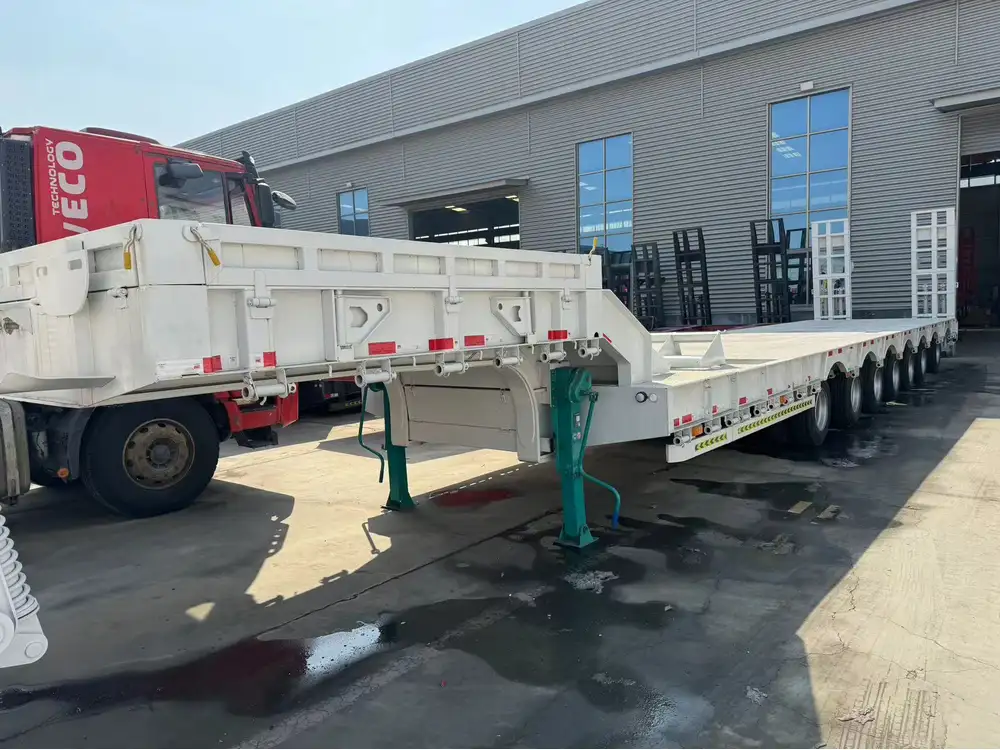
3. What maintenance practices are essential for concrete transport trailers?
Essential maintenance practices include regular cleaning of the drum, inspecting and maintaining the engine and braking systems, checking tire pressure, and ensuring all safety features are operational.
4. How does CarMax Vehicle ensure the quality of concrete during transport?
CarMax Vehicle ensures quality by using advanced drum technology to keep concrete agitated, implementing smart monitoring systems for real-time tracking, and maintaining rigorous maintenance schedules to prevent equipment issues.
5. What are the environmental benefits of using CarMax Vehicle’s semi-trailers?
Our semi-trailers are designed with fuel-efficient engines and emission control technologies, reducing greenhouse gas emissions. Additionally, our equipment minimizes concrete waste through precise loading and controlled pouring techniques.



